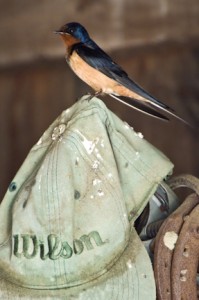Since we are talking about questions I am often asked here is another popular one- “What settings do use on your camera?”
These are the settings I use for a vast majority of the time. Under specific circumstances I do use other setting but I have to have a specific reason to do so.
I use matrix metering (Canon calls it evaluative metering)- the metering mode that reads the entire viewfinder. I do this because the computers in cameras are so sophisticated that they are better at figuring out exposures than I am. And with digital, I can always check the histogram and make any adjustment I need to. I will use spot metering for extremely contrasty situations or when I am doing wildlife and I can easily meter on the animal.
I check my histogram every time the light changes. Mine comes up with just one push of a button so it is easy to find.
I use single point autofocus with 28 points (I think that it is 28) so I can move the focus point to exactly where I want it. Anymore than 28 gets annoying and distracting. Sometimes I will use 13 points, it is not a big deal to me. If there is something moving fast that I want to photograph I will use a cluster of autofocus brackets- Nikon calls this dynamic autofocus. I will choose where to place the cluster of brackets depending on the composition.
I still use the shutter to trigger the autofocus rather than the button on the back of the camera. I know there are strong feelings about this but again it is not a big deal to me. The problem I have using the back button sometimes is when I am photographing moving subjects and I need to move the autofocus point constantly. Then I have to keep my thumb on the toggle in back to move the autofocus bracket so it is difficult to also use my thumb to trigger the autofocus. I know, you disagree; do it however you are comfortable.
I typically use single on the motor drive (one shot at a time) unless I am shooting wildlife or something where gesture or expression is important. When I am shooting at high-speed autofocus (4-6 frames/second) I will fire off short bursts when my subject is doing what I want it to do. I do short burst for people or animal portraits because subtleties of pose or expression can make all the difference. With a burst I can choose just the image I want for all the similar but still different shots.
I keep my ISO generally in the middle of my useable range. For my Nikon D300s I use ISO 400 as a start and then vary from there. For my Nikon D3s I use ISO 640 or even 800. For landscapes I will bump it down to ISO 200, for moving subjects or very low light I will often shoot at ISO 1250 or even 1600 on my D3s.
I always shoot Aperture Priority because the depth of field of my image is always more important than my shutter speed. I used to shoot in manual metering but that was when camera metering wasn’t very sophisticated. It got better so I adapted.
I also generally have my auto-compensation set at -.7. This means I am telling my camera to slightly underexpose the images. I am just fudging here in case I don’t notice an important highlight that I don’t want to blow out. If, when I check my histogram, I notice that it is too far to the left (too dark) then I will bring the auto-compensation up to 0. By the way, if I have to move my auto-compensation past -1.0 to get a good exposure I always stop and ask myself if the light is really something in which I want to photograph. If I have to go to -1.3 or even -1.7 the light is awful and I know better to shoot. I have never shot at a plus auto-compensation number.
And since you asked here are the settings I never use: I never use single servo and I don’t know why I ever would. I am always on continuous servo. I don’t think I have ever used center-weighted metering. Matrix or spot metering does it all for me. I have never shot in either program mode (I don’t want the camera making both f-stop and shutter speed decisions) or shutter priority. I have handed my camera to someone who didn’t know anything about photography and had it on Program just so they could get a shot but that is all.
I only shoot in RAW and never RAW plus JPEG. Again don’t know why I ever would. I also reformat my memory cards every time I put a new one in- I do this religiously.
There you have it- the way I have my camera set to photograph. Nothing says that this is the only way to do it but you better have a pretty darn good reason to stray from any of these settings. Or you just may want to. Either way works.



